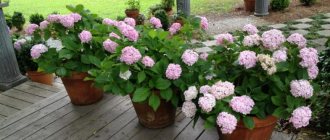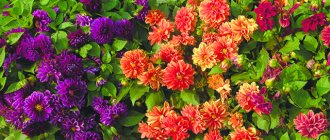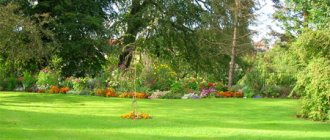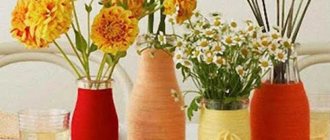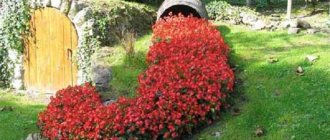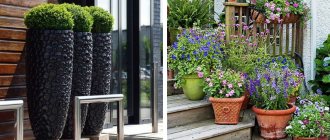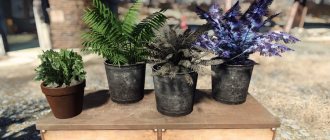Choosing a pot for a novice gardener can be a real headache. After all, there are so many of them in the store that your eyes just run wild. But you can’t rush into a purchase: your indoor plant should grow not only in the most beautiful pot, but also in the one most suitable for it.
Hello, friends! Today's post is dedicated to those who love and grow flowers at home. From time to time, plants require replanting, and this is where the question often arises for an inexperienced gardener: which plant should choose which pot?
In the store, my eyes widen: this pot is cute, and this one, and that one... After all, I want to buy pots that are not only beautiful, but also suitable in size for plants. How not to get confused in the huge assortment and choose the right pot for your green friend: so that both the flower is comfortable and the owners’ eyes are happy?
Let's figure it out. And let's start with the fact that there may be several criteria for choosing a new “place of residence” for your flower:
- pot size;
- the material from which it is made;
- form;
- color and texture.
Which of these criteria do you think is the most important based on plant preferences? I think you have guessed for yourself that the first thing you should pay attention to when choosing a pot in a store is its size.
My blog about indoor plants on Yandex Zen: come in, there’s a lot of interesting stuff there!
How to choose the right flower pot?
So, you bought a houseplant or the plants simply grew bigger and became cramped in the old pot; you need to replant them. Especially purchased indoor flowers are often sold in containers for transportation, transplanted into a new pot
simply necessary.
Flower pot sizes
Let's decide on the size of the flower pot. If the plants are tall and mature with massive leaves, they will need a large pot (for example, monstera, ficus, clerodendrum).
Plants such as violets, gloxinia, pelargonium and the like are better suited to small flower pots
.
Pay attention to the diameter and height of the pot. The height of the flower pot should be at least 1/3 of the height
the plant itself.
The diameter of the pot is selected as follows: the wider the crown of the plant, the wider the diameter of the flower pot. For plants with a height of 30 cm or more, a pot with a diameter of 20 cm or more is suitable. The ideal proportions of a pot are obtained when the diameter is equal to 2/3 of its height
.
When choosing a pot for very tall plants
, such as common myrtle, pay attention to the diameter of the base, it should be at least 1/3 of the height of the plant.
Return to contents
Subtleties of measurement
To correctly determine the size of a pot, you first need to figure out how to measure it correctly. There are different shapes of planters and they are all measured differently.
As bright and famous as her sister. How actress Svetlana Antonova lives What happens if you eat pickles every day: weight loss and more For the neck, arms: patches are used not only for the face, but also for other parts of the body
For example, the size of a round pot is determined by the diameter of its top. However, there is a catch: although the pots may have an identical diameter, this does not necessarily mean that they are the same size. Therefore, it is also worth comparing different containers based on the volume of soil that can fit in them.
Flower pots – what material to choose from?
Plants feel especially comfortable in clay and ceramic pots.
. One of the disadvantages of such a pot is fragility. It may break if dropped, you need to be careful. When reusing such pots, they must be disinfected.
For larger plants that sit on the floor, buy a plastic pot.
, it is much lighter than ceramic and it will be easier to move the plant.
The most practical and relatively cheap plastic pots
. Today there is a huge selection of plastic flower pots in stores.
Return to contents
Video – Flower pots
Choosing the right flower pot
If you are going to replant and divide the plant bush, you will need several small pots.
When transplanting adult plants, choose a pot 1.5-2 cm larger
than the old pot. When replanting plants, a new soil mixture is partially added.
When replanting a young plant that continues to grow, you will need a pot 3 cm larger than the previous one.
When replanting fast-growing or large plants, and when the next replanting occurs in 2-3 years, select a pot 4 cm larger than the old one
.
If you have old flower pots in stock and want to use them, they must be disinfected and then dried. Chlorine-containing products are suitable for disinfection.
Return to contents
Focus on the roots
The main reason many varieties need larger pots is hidden below the ground rather than above it. Although different types of plants may have different preferences regarding pot size and the space required for root development, most grow best when the pot is at least 4-5 cm larger in diameter than the plant itself.
In this case, the roots will be most naturally distributed in the soil and will be able to receive water and nutrients from the entire volume of soil.
Are drainage holes in flower pots necessary or not?
Flower pots for growing plants must have drainage holes
to drain excess water.
But there are pots that serve as decorative ones - flowerpots without drainage holes. The main disadvantage of pots is the accumulation of excess water at the bottom after watering, which leads to rotting of the roots and the development of various diseases.
If you purchased a pot without a hole, you can use a drill to carefully drill it. There should be one hole in the pot for every 10 cm2 of volume.
Other flowerpots
Every year, an increasing variety of dishes for growing indoor plants appears on the market.
Along with the most common ordinary pots made of clay or plastic in everyday life, you can often find flowerpots made of rather exotic materials. There are pots of more complex designs and with additional functions.
Glass pots
Glass pots are undoubtedly very beautiful; they attract with their variety of shapes, textures and colors.
Their undeniable advantage is environmental friendliness: glass flower pots do not emit harmful substances and are not susceptible to the aggressive effects of fertilizers and other chemicals used to care for the plant.
Finally, such flowerpots are easy to wash, which allows them to be reused. Unless, of course, you break them. Fragility is a serious disadvantage.
Also, glass containers usually do not have a hole in the bottom , so it is advisable to use them as flowerpots (from the French cache-pot, “hidden pot”).
Natural stone pots
Natural stone used as a material for a flowerpot is certainly good.
It creates an environment close to natural for the plant, the soil in it slowly heats up and cools just as slowly, it looks luxurious.
True, there are certain difficulties in caring for a green friend; it is difficult to replant or move a flower growing in such a flowerpot.
It is advisable to use pots made of natural stone for growing slowly growing plants that do not require frequent replanting: conifers, dracaenas, some succulents.
Floor pots for indoor plants made of stone look massive and are very heavy.
Metal pots
Metal pots heat up and cool down quickly, which is harmful to flowers
Metal flowerpots are original in their own way: they look great in a modern interior, are strong and durable, easy to use, and can be very diverse in shape.
Houseplants generally do well in metal pots, provided they are kept in the shade.
In the sun, metal containers become very hot and the root system suffers greatly. Also, metal can cool quickly, so it is not advisable to place such pots on a stone floor in a cold room. Also, do not place them on the balcony.
Gypsum pots
Gypsum pots look similar to clay pots, especially those coated with glaze.
But their properties are somewhat different. Having a similar texture and the same fragility, gypsum pots are less hydroscopic.
The root system of plants in a gypsum container develops quite well . Gypsum vessels for growing indoor flowers can be considered as a compromise between clay pots and plastic flowerpots.
Pots - how to use?
Such pots perform a decorative function. Flowerpots are made from various materials: ceramics, plastic, wood.
Often flower pots with plants are placed in flowerpots. Flowerpots give an interesting aesthetic appearance to the interior, but excess water must be drained every time after watering.
You can put moss between the walls of the flowerpot and pot, which will absorb excess water after watering, gradually evaporating the moisture. If you will be using a flowerpot
, as a way to increase humidity, you need to choose a size 3-4 cm wider than the pot that will stand inside.
Return to contents
Potted Plant Problems
Fans of indoor floriculture, while caring for their pets, may discover a number of unpleasant phenomena, the reason for which lies in violation of the rules for keeping greenery in pots.
Midge
Uninvited guests in pots with waterlogged soil are white or black midges measuring 1-2 mm.
Insects of white or greenish-brown color - porudas - fly and jump over “flooded” flowers with soft foliage: fuchsia, begonia.
Black translucent scearids accumulate on the wet surface of the ground or near a tray near violets, azaleas and other plants with dense leaves. The larvae deposited by midges compact the soil and deplete it of oxygen, and also damage plant roots.
You can get rid of midges in flower pots quickly and effectively, without the use of insecticides. How to do it at home:
- stick citrus peels or matches into the soil with the sulfur heads inside;
- sprinkle the ground with ash or tobacco dust, place garlic cloves on the surface, cut sides down;
- water the soil with a weak solution of potassium permanganate;
- sprinkle with strained garlic infusion (0.5 liters of boiling water per 1 head of chopped garlic, leave for 4 hours);
- Wash the leaves with a solution of dark laundry soap.
If there are a lot of midges, then treatment with drugs will be more effective: in addition to “Fly Eater”, “Intavir”, “Fitorporin”, “Raptor” and “Mashenka” help.
If midges are detected, you must first of all limit watering, be sure to loosen the soil, and exclude all types of organic matter from feeding: meat, tea, coffee water, vegetable broth or liquid from boiling eggs together with the flower feed the pests.
Mold
If you do not follow the rules for caring for flowers, a whitish fluff or a light coating of blue shades may form on the surface of the soil. The smell of rot emanating from the flower pot indicates the fungal nature of this phenomenon.
White mold growing on the soil surface is a colony of the mucor fungus. Blue mold mycelium affects not only the soil, but also the woody parts of plant trunks.
Create conditions conducive to the spread of fungal spores into the environment:
- stagnation of water and acidification of the soil;
- heavy and alkaline soil;
- increased indoor humidity combined with low air temperature;
- insufficient sunlight;
- lack of regular ventilation.
A radical way to combat flower mold: changing the soil. Heat the new substrate in an oven and mix it with crushed charcoal. Wash the pot with soap and pour boiling water over it, disinfect the roots of the flower.
Measures to prevent fungal infections - monthly disinfecting watering with a weak solution of potassium permanganate (you can use lemon, activated carbon), less organic matter in fertilizing.
Salt coating
The appearance of whitish-gray or yellowish-brown crystals (efflorescence) on the surface of the earth, at the base of the flower and on the walls of the pot is a sign that there are many impurities in the irrigation water, and the earth is oversaturated with fertilizers.
Crystalline plaque is not fungal spores or pest eggs, but the deposition of poorly soluble mineral salts and lime accumulated in the soil. The thinner the salt layer, the more it impedes the breathing of greenery and prevents it from accepting nutrients from the soil.
Efflorescence is destructive for plants with lime intolerance: bud drop, chlorosis of leaves in azaleas, hydrangeas, gardenias.
The appearance of salt deposits can be avoided:
- When feeding, give preference to fertilizers in granular form.
- Provide watering with soft water: boiled; thawed after freezing; acidified (per 1 liter – 10 drops of vinegar or 1 tsp of citric acid); tap water, after settling for 24 hours.
Pots - types and choice
Classic flowerpots in pastel or neutral colors can highlight the beauty of plants.
Bright flowerpots will push the beauty of plants into the background, attracting with their original appearance.
Plain flowerpots
They will bring a certain style to your home, but sometimes, a strict selection of pots of the same color becomes monotonous and boring.
Many people like to decorate flowerpots with their own hands using various materials (pebbles, shells, beads) and needlework techniques.
Return to contents
Containers
Containers for flowers and plants are used:
- As a tray and air humidifier.
- For flower arrangements and joint planting.
It is important to remember that a properly selected pot will ensure the healthy growth and development of your plant or flower in the house.
Containers at home are usually used for growing several plants of the same species or different ones, but with the same care requirements. These containers are a cross between a pot and a flowerpot.
